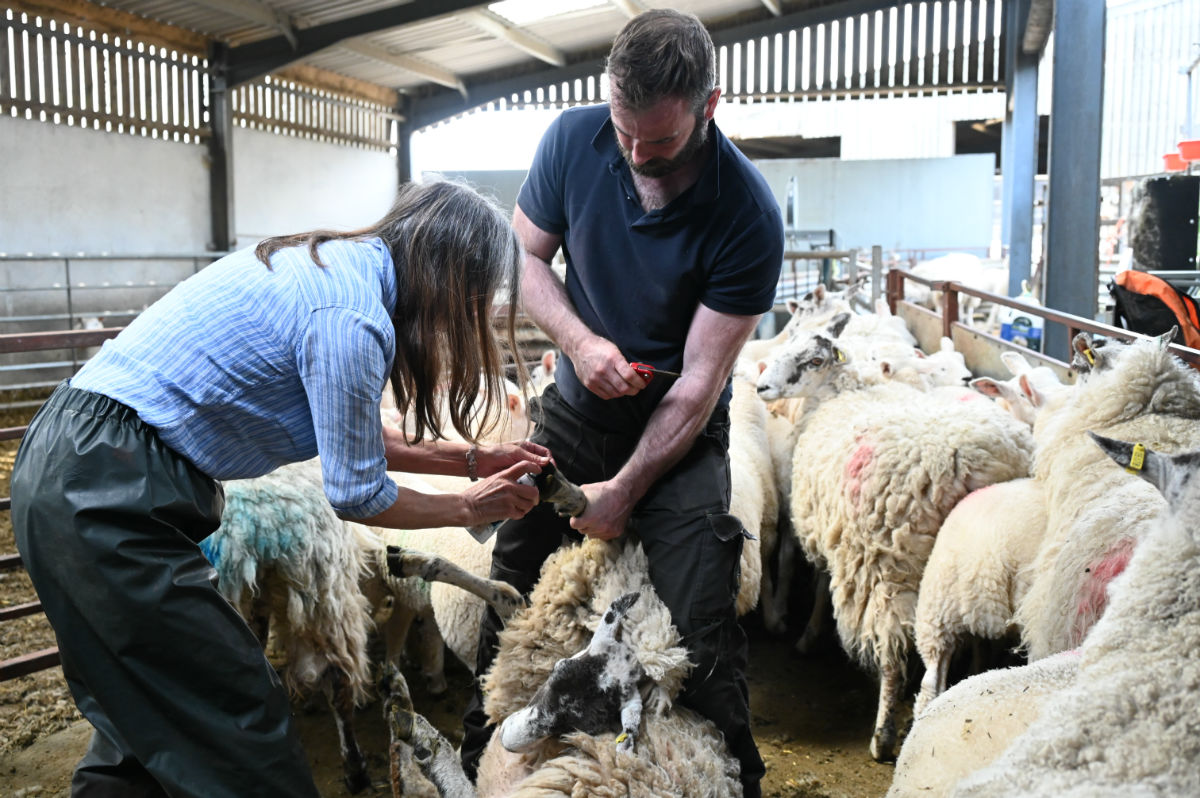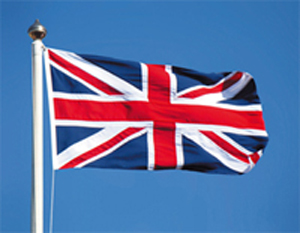
In July 2023, Marianne Landzettel travelled to Northumberland, England to meet and interview four farm families. The resulting story portrays the difficulties upland farmers face as they navigate compounding crises. The phasing out of EU direct payments and their replacement with a system based on ‘public money for public goods’, combine with high input costs, extreme weather events, and increased market competition to threaten farm futures. While the government encourages diversification to generate more income, the reality of diversifying a farm enterprise is not straightforward nor without barriers.
This is the first instalment of a two-part feature by Marianne Landzettel.
Northumberland is known for its ragged coastline and its biggest city, Newcastle, is famous for its football club and the beautiful bridges spanning the Tyne. To the north lies Scotland. In the west, the Cheviot Hills, the Northumberland National Park and the North Pennines are destinations for hikers and long-distance walkers. And then there is farmland – rolling hills, dotted with grazing sheep and cattle, the pastures still separated by traditional stone walls, hedges sheltering old farm houses and barns from the wind.
In summer sunshine, with cumulus clouds drifting overhead, the scene couldn’t be more peaceful and idyllic. But things are not well on England’s upland farms, in particular not here, in Northumberland.
With much of the land still owned by landed gentry, the Duke of Northumberland alone owns nearly 40,500ha/100,000 acres, most of the farmers are tenants. Today, seven years after the Brexit referendum and a good two and a half years after the UK left the EU, many of the farms are facing financial ruin.

A changing system is short-changing farmers
A recap: While Britain was an EU member, farmers received money under the Basic Payment Scheme (BPS) which was part of the Common Agricultural Policy, CAP. In England, the government is continuing to pay farmers, but the sums paid out per hectare are gradually reduced: this year, payments are down by 50%, and in 2027 they will end. BPS is to be replaced by ‘public money for public goods’ and the three tier Environmental Land Management scheme, ELMs.
Relevant for most farmers is only the first tier, the Sustainable Farming Initiative, SFI. In June, the government finally published a 150-page handbook that specifies how much money farmers* can receive for which measure and under what conditions. The application period to join individual schemes was scheduled to begin in August, but was postponed by Defra until mid-September.
For hill farmers, up to 95% of farm income previously came from the BPS, on upland farms where the climate is not quite so rough and pasture quality is better, direct payments made up between 30% and 60% of farm income. How will these farmers cope with the shortfall? How much can be replaced by SFI schemes? The British government advises farmers to diversify to generate more income – how would that look like in practice on an upland farm? In July, I and my (photographer, driver) husband went to Northumberland to find out.
Sunday night dinner and the lay of the land

David Stanners and his wife Annabel farm near Risdale, a village about 20 km north of the market town of Hexham. I got in touch with the Stanners through the NFU (National Farmers Union) Upland Forum. David is one of the Forum’s committee members. That evening, Annabel had booked a table at the Gun Inn in Risdale and invited three fellow tenant famers, friends and neighbours to join us.
There is Michael Walton and his wife Julie, a long-time community nurse studying at present for a level 7 exam which is the equivalent to a masters’ degree. For Graham Robson and his wife Lindsey it is the first evening out since they had their baby daughter, nine weeks ago. Nigel Moore came on his own because his wife had to look after an elderly relative who just had a hip replacement. Scheduled surgeries such as this can be done in the urgent care facility in Hexham, but the maternity ward there has recently closed down and the nearest hospital with an Accident and Emergency unit is 50 kilometres away. “The social care crisis is getting worse and worse”, says Julie Walton.
The nearest schools are in Bellingham, a village 9 km to the west. A school bus picks the kids up, but from autumn, Annabel’s and David’s daughter Isabel will attend a school in Hexham. She will be picked up by a taxi that delivers her to the nearest stop for the school bus.
Risdale has no shop. The pub stood empty for quite some time until it was saved through a crowdfunding campaign. Bellingham has a Coop supermarket, but for most of their shopping, and for all after school activities for the children, medical appointments and other services, the farmers have to drive to Hexam. There is no public transport to speak of – the bus stops in Risdale once a week on a Saturday. Roads are narrow and as we find out the following day, road closures for maintenance work can lead to long, time consuming detours. There are large areas with no mobile phone coverage.
This lack of infrastructure is not just inconvenient, it also limits options for diversification: farmgate sales or running a farm shop don’t make sense if few customers are ‘nearby’, nor does the delivery of small quantities of produce such as eggs to shops or private households an option if there is, in effect, no customer base to speak of.
Dropping the Brexit question
We arrange the schedule for the next two days and then quickly get into the discussion: in 2016, the farming community had overwhelmingly voted for Brexit. What do farmers think now? As it turns out, around this table, all but Michael Walton voted to ‘remain’. He now feels “duped by the government”. At the time he thought with more countries joining the EU, payments for farmers would decrease. “I thought, the UK government would have a really good agricultural policy and we would benefit”.
Upland farms across the UK are well suited for raising sheep and cattle but there is practically no arable land, even the acreage for making hay or silage (for winter feed) is limited. The biggest worries for UK livestock farmers therefore are the newly signed trade deals with Australia and New Zealand. “These deals will permanently decide whether or not we can sell meat and at what price”, is the agreed opinion.
Under these circumstances, diversification seems like a good strategy. Putting it into practice on an upland farm is a different matter. Egg laying hens, broilers, a pig unit, dairy cows… diversifying into any of these sectors would mean large financial investments. And being very experienced at handling sheep and beef cattle, does not mean you know how to run a successful pig or egg laying operation.

Given the margins in the beef and sheep sector, banks are unlikely to grant big loans, especially not to tenant farmers who not only need the permission of the landlord to build ‘anything’, but who are also at risk of losing the business when the landlord decides not to renew the lease.Old tenancy agreements often were in place over four generations, but now agreements mostly cover a five to ten-year period.
The four farm families have thought about marketing meat directly to customers. Issues such as building a website with an online shop would be a challenge, but the real problem is slaughter and processing. The nearest abattoir is in Durham, a 70 km journey for the animals; and the local craft butcher who used to cut and portion meat for the Stanners recently closed down.
Options? What options?
How about going organic? It’s not worth the effort, the farmers agree. All four know of organic farmers who can’t find buyers for their organic meat and have to sell it as ‘conventional’. And there are the certification costs. Moreover, as organic farmers, they would also have to reduce the number of animals they raise.
Upland farms are low input systems, but with a very short growing season the farmers say they have to use chemical fertiliser on the few acres suitable for growing silage. The cattle are hardy enough to stay out all year, but in recent years, there was so much rainfall that the animals had to be brought in because the pastures would have turned into mud within days and been irreparably damaged by their hooves. And whatever the weather conditions, in winter, cattle and sheep need additional silage.
In recent years, the climate crisis has made matters worse: the summers were hot and dry, which meant less silage could be made and the animals needed additional feed earlier in the year.
With prices for synthetic fertiliser and feed going through the roof since the war in Ukraine began, costs have increased dramatically. And with trade deals threatening to cut into their margins, input costs increasing and land rent to pay, the loss of the BPS is fast turning into an existential threat.
The SFI scheme and paying farmers for providing ‘public goods’ is supposed to make up for some of the shortfall. July is a busy month for all farmers, not just for the upland farmers sitting around the table that evening, but decisions have to be made.
The options laid out in the 150-page government SFI handbook will have to be carefully considered. Farmers not only will have to find out whether they qualify for particular schemes, they also need to decide whether the restrictions or obligations that may apply to a particular scheme cut into profits and leave them worse off. As David Stanners puts it, “Basic payment was free money, SFI money has strings attached”. For the record: under BPS farmers did have to fulfil requirements but compared to SFI those are negligible.
The next two days we spent visiting the farms to find out what the situation on each farms looked like.
Michael Walton: Cutting costs but how?
The Waltons have been farming for generations. The tenancy is secure for another three years, then the rent will go up, says Michael Walton. At present he farms 485 acres, of which he owns 160. “It’s mostly rough land, it’s called ‘boat fell’** because it is so wet”.
He runs an 80 head suckler cow herd, and 700 Swaledale and Texel cross sheep. Because of the weather, there is more money in sheep than in cattle, he says. If he is lucky, the cows have to be housed only in January and can be out again by March. But last year, he had to bring them in in December and they could not return to the pasture until May which added hugely to the costs for feed and straw.
Lambing season starts in April. He sells fat lambs, mostly through Dunbia, a large meat processor and food company. It is usually the safer option than selling through auction at the live mart where prices fluctuate a lot: “At the life mart you have to be prepared to take your animals home again”, says Walton. His goal is to sell 1,000 lambs per year, in 2022 he sold 1,100 – to him that is a measure of running a productive farm and a job well done.
When we arrive on the farm, Walton and his mother, Caroline, are getting ready to deworm the lambs. It’s hard work, but mother and son are an efficient team. While they separate the ewes from the lambs they check the feet, trim hooves and treat with an antiseptic spray where necessary.

Caroline Walton raised her family and worked on this farm almost all her life. Now, aged 70, she lives in Bellingham with her husband, also called Michael, who suffers from Parkinsons and Alzheimers. From the 1970s to the late 80s it was mandatory for British farmers to dip sheep twice a year with organophosphates. Michael had to do that too, says Caroline Walton, and with so many sheep, he got drenched every time. Is this the course of his illness? She shrugs her shoulders, there is no way of knowing for certain and it wouldn’t change a thing. Some days she manages to bring her husband out to the farm, on other days he stays with a carer.
When I ask about the finances of the farm, Michael Walton Jr. readily shares the figures. At present, fertiliser costs £550 a ton, more than double what it was before the Russian invasion of Ukraine, but down from £750 in 2022. His budget for fertiliser is £15,000. Because of the extreme prices last year, he had to cut down on the amount of fertiliser he spread per acre. As a result, the amount of silage he made was significantly down and he had to buy in more feed.
He spends £15,000 on straw and he has to pay £20,000 in land rent. Some of the land is in a mid-tier Countryside Stewardship scheme which earns him £14,000. Under the EU Basic Payment Scheme he received £55,000 which made up 50-60% of the farm’s income. From the SFI options available he will receive £4,000 at best. Which means that by 2027 he will be £50,000 worse off than pre-Brexit.
Walton looks quite stunned when we arrive at this figure. Of course, he knew payments would come to an end, but he never made the actual calculation. “So many of us farmers have our heads in the sand because it is too awful to think about. Instead we believe that by some magic this sum will be replaced by something, somehow. But it won’t”.
His only option will be to cut costs, he says. Maybe he could stop using fertiliser altogether if he reduces the number of cows. But even then, the amount of work on the farm would be more than what one farmer can handle. At present, his mum is still working with him more or less full time. She is fit and in good health, but for how much longer will she be able to continue at this relentless pace? Because of her full-time job as a district nurse, Walton’s wife, Julie, cannot help out on the farm. In future, she may well be the main breadwinner and Michael Walton will likely be unable to continue farming without her off-farm income.

Notes
*At present, only farmers in England can join SFI schemes. The devolved governments in Scotland, Wales and Northern Ireland develop their own agricultural policies.
** In northern England and Scotland, an upland moor covered hill or rocky slope with sparse grass cover is called a fell.
The next part of this series will share the stories of the other farm families Marianne Landzettel met in Northumberland, July 2023, as well as an insight into the impacts the difficult circumstances are having on mental health in the community.
More
Post-Brexit Farm Policy – Where Do England’s Smallholdings and Horticulture Sector Stand?
Post-Brexit Farm Policy – Outlook Across Northern Ireland, Scotland and Wales




